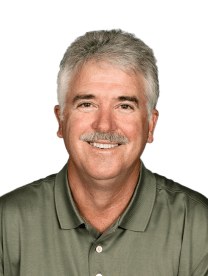Quoting singer Etta James in her iconic love song, “At last!”
That’s my initial reaction to this week’s long awaited announcement by the USGA and the R&A on new rules concerning the golf ball, distance and their impact on the game.
In short, the rule makers are rolling back the ball for elite competitions only, and not for recreational play. This is a bifurcation of the rules and thus a major change in the USGA’s and R&A’s previous position.
But something had to be done because due to the swing speed of elite professional and amateur golfers, the ball and the distance generated had adversely changed the “essential challenge of the game.” Indirectly, it was a boon to course architects employed to lengthen courses and adjust the positions of bunkers and penalty areas.
In previous columns, this issue has been discussed and dissected. Last year, I mentioned how Major League Baseball (MLB) has done a better job in policing its implements, making sure innovations such as the aluminum bat are not introduced at the MLB level—thereby ensuring the integrity and legacy of its traditional ballpark dimensions. (And this year, MLB is introducing a pitch clock and banning defensive shifts in the infield to shorten games and encourage more hitting.)
Similarly, the Tennis Federation made changes to its official ball in 2002 in order to decrease its speed in flight in order to encourage more rallies. And it did!
Something had to change for elite golf. And to be fair, the golf ball technology is only one part of the distance debate. Certainly, innovations in shafts and clubheads along with player fitness and how courses are set up have contributed to the problem. But the golf ball needed to be addressed.
The USGA and R&A patiently did their homework and provided ample evidence of how increased distance has shaped competition over the last 30-40 years. Last year, I cited how Dan Pohl was the Tour’s longest driver in 1980 with an average drive of 274.1 while his peers averaged only 256.6 yards.
This week the USGA and R&A reported the average distance on the Korn Ferry Tour in 2022 was 307.8 yards! On seven tours measured around the world, the average distance increased by 4% over the previous year.
The announcement was followed soon after by a formal press release by the Acushnet Co., maker of Titleist balls and equipment, challenging the USGA & R&A’s proposal.
It began by lamenting the proposed bifurcation of rules, stating it “would divide golf between elite and recreational play, add confusion, and break the linkage that is part of the game.”
In its release, Acushnet led off by quoting the USGA and R&A from its May 2022 statement:
“The R&A and USGA continue to believe that the retention of a single set of rules for all players of the game, irrespective of ability, is one of golf’s greatest strengths. The R&A and USGA regard the prospect of having permanent separate rules for elite competition as undesirable and have no current plans to create separate equipment rules for highly skilled players.”
Acushnet’s CEO David Maher also countered there was evidence that current regulations are already managing the distance matter:
“As we see it, existing golf ball regulations for Overall Distance and Initial Velocity are highly effective. During the past two decades, PGA TOUR average course playing length has increased by less than 100 yards and scoring average has remained virtually flat. Average PGA TOUR clubhead speed of 114.6 mph in 2022 was well below the current 120 mph and proposed 127 mph testing conditions. The proposal of golf ball bifurcation is in many respects a solution in search of a problem.”
That’s a warning shot across the bow of the USGA and R&A.
It should be noted these are proposed changes with manufacturers having until August 14, 2023 to provide comment and feedback. If adopted, the changes would take effect on Jan.1, 2026. That’s basically three years away, more than enough time for manufacturers and elite players to get ready for the change, however grudgingly.
Meanwhile, recreational golfers—and manufacturers that supply them—can rest easy knowing their longer drives are protected.
images courtesy of Dan Pohl and Acushnet Golf


